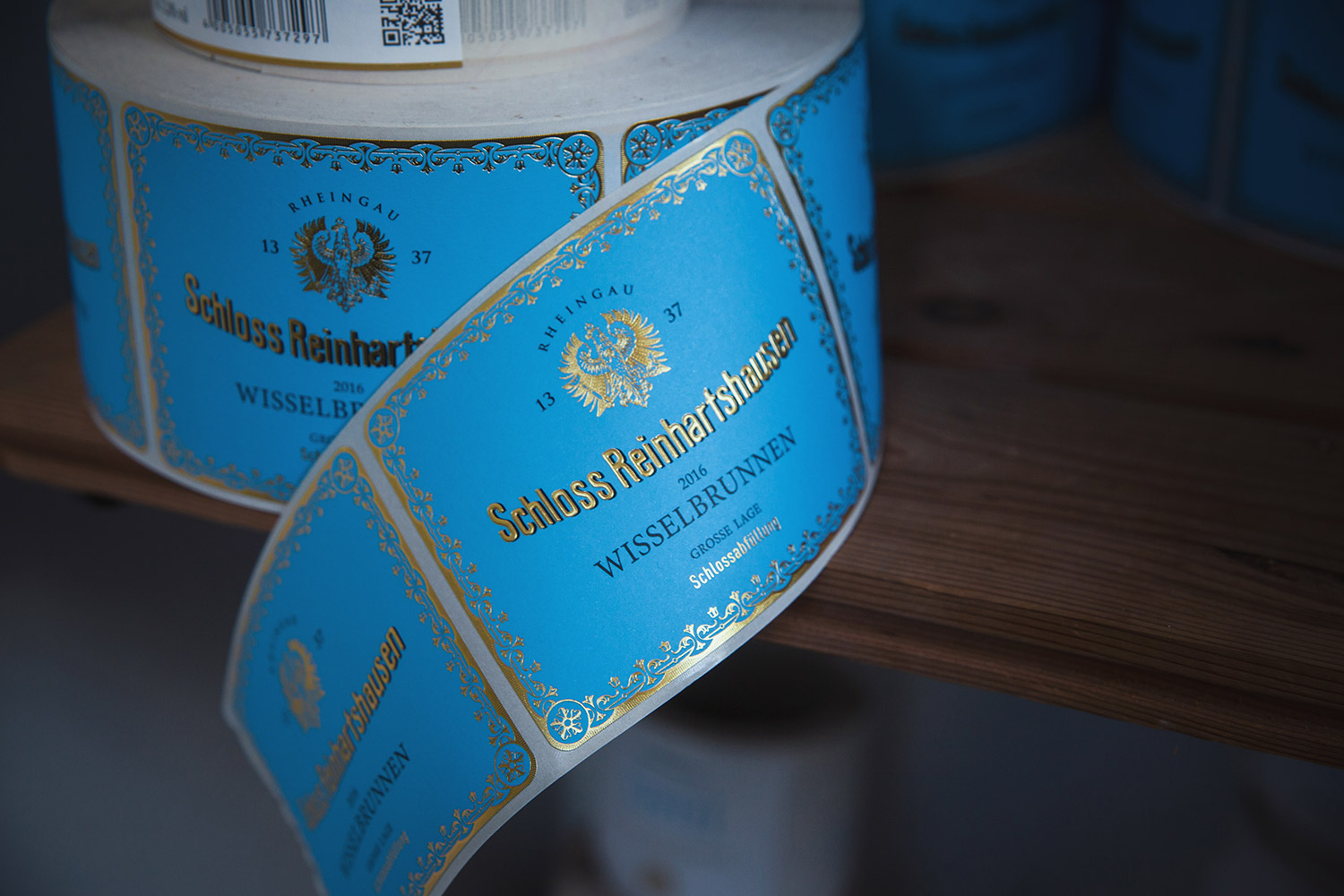Hattenheimer Nussbrunnen
As the camp name suggests, the Nut Well is a well formerly framed by nut trees. It is located adjacent to the Wissel Fountain. The location is exposed to the south-southeast and sunlight is favored by a valley incision in front. Already in bloom, this provides the best microclimate.
The deep and also multi-layered soils of loess and loess loam with portions of tertiary marl ensure excellent water management. The wines are elegant in structure with an abundance of fresh Riesling aromas.
Hattenheimer Wisselbrunnen
The 18 ha site has mainly lighter, tertiary marl soils. Deep loesses also run through the Wisselbrunnen and ensure an exceptionally good water balance. The water comes from the neighboring Taunus Mountains and also brings important nutrients and minerals to the vineyards. The location is exposed to the southwest, which provides optimal sun exposure.
The Wisselbrunnen produces particularly fine Rieslings and impresses with its spicy note.
Erbacher Hohenrain
Here grow our oldest vines with over 60 years. The southern slope above the old center of Erbach is bounded on the west by a high wall. With sunlight reaching into the evening hours, the site has a warm, wind-sheltered microclimate.
With the term “rain” refers to a slope on the edge of a corridor.
The oldest vines of the castle grow on deep loess soils, interspersed with tertiary marl layers. While many vineyards around these vines have now fallen victim to land consolidation, these preserved “old vines” show what a vineyard is capable of at a mature age.
Erbacher Siegelsberg
This site was mentioned as early as 1270 and refers to a sealed contract of sale by which a former owner of Reinhartshausen Castle acquired the vineyard from St. Peter’s Monastery in Mainz.
Due to its slightly elevated position, above the Marcobrunn, the Siegelsberg ripens not only Riesling but also Pinot Noir grapes. The soil is distinguished from the Marcobrunn by the increased loess content of its marl structure and the Taunus quartzite that penetrates the surface here. The microclimate consists of intense solar radiation and excellent ventilation.
Erbacher Marcobrunn
The wines from the Marcobrunn are considered Rheingau cultural assets and are world famous. The site is a slightly sloping southern exposure in the district of Erbach. Its name dates back to the 13th century and commemorates a well on the municipal boundary between Erbach and Hattenheim. As early as 1867, the site was classified as a first-class vineyard with the first site classification in the Rheingau. The Rieslings can age for decades until they reach full harmony.
The heavy, deep soils have a multi-layered structure. Loess loam and calcareous soils consisting of marl and sand components provide a good supply of nutrients and regulate the water balance in dry periods. The Erbacher Macrobrunn has international stature and is one of the most valuable top vineyards in Germany. The body, power and structure of the wines are in perfect harmony with mineral freshness and elegance.
Erbacher Schlossberg
Almost half a century ago, the most valuable vineyards around the historic castle were allocated to the winery as a monopollage “Schlossberg” in sole ownership. Small grapes from approx. 60 year old vines of 2.5 ha large filet piece of the Rheingau guarantee a quality beyond any comparison.
The site is planted exclusively with Riesling and the pure loess soils, which are up to 4m thick, provide the vines with sufficient nutrients and minerals.
